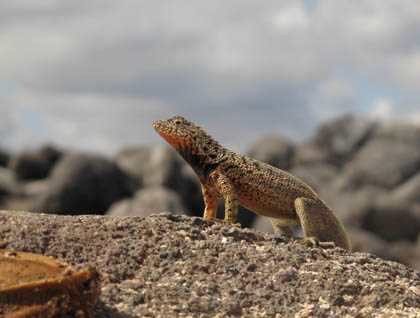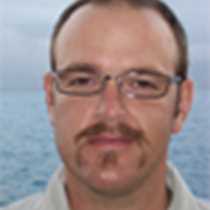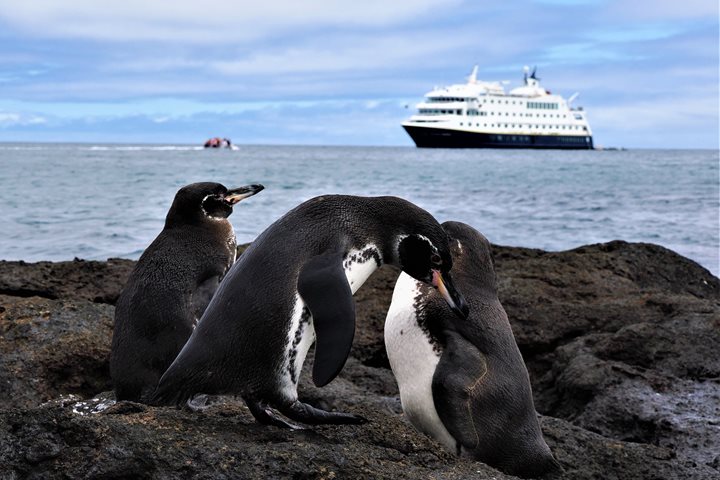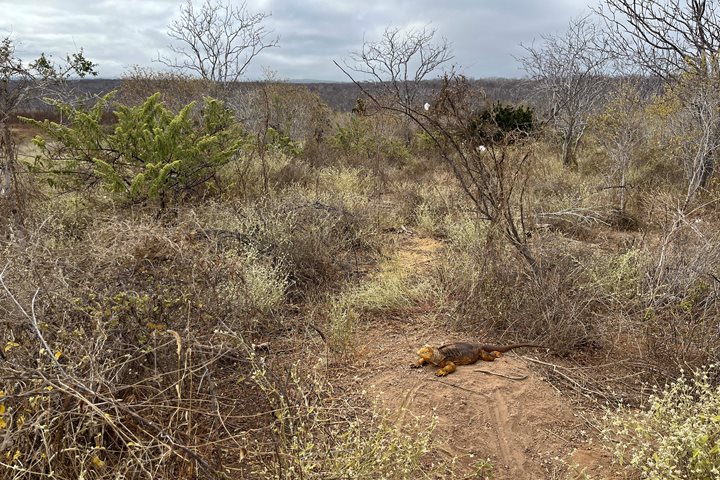Our exploration of the island of North Seymour begins with a day bathed in contrasts and diversity. As soon as we come ashore, we encounter land iguanas foraging along the coast and searching for shade under the heavy Ecuadorian sun. As we head inland, we find a terrain lined with dry incense trees and soil among the rounded volcanic rocks underfoot. An occasional blue-footed booby is heard in the distance trying to obtain a mate, even though it is late in the season for breeding. An intermittent male Frigate bird is seen with its gular pouch inflated as he tries to attract a female that flies overhead. Numerous juvenile frigate birds are sitting on guano cemented platforms, waiting for their parents to return with food. A chick that has hatched in the last few minutes is trying to raise its head, to call to its parent to ask for food. An incredible amount of life is found on this apparently barren platform referred to as an island.
After an incredible outing in the morning at north Seymour Island, we head to our next destination, “the terracotta island”. Rabida Island is a satellite of Santiago Island, full of interesting geological features as well as wildlife. Sea lions are nursing their babies at the beach, while other young pups await the return of their mothers, while blue-footed boobies and brown pelicans delight us with their plunge diving along the shore. As we walk along the red sand beach we encounter an occasional yellow warbler fluttering among the saltbushes. Desiccated sea stars are littered along the beach among small shells and minute rounded red volcanic pebbles. The last beams of sun give us an incredible sunset as it disappears behind Isabela Island in the distance. All are content as we head back to our floating home and continue our navigation to Isabela Island, where new discoveries await us.







